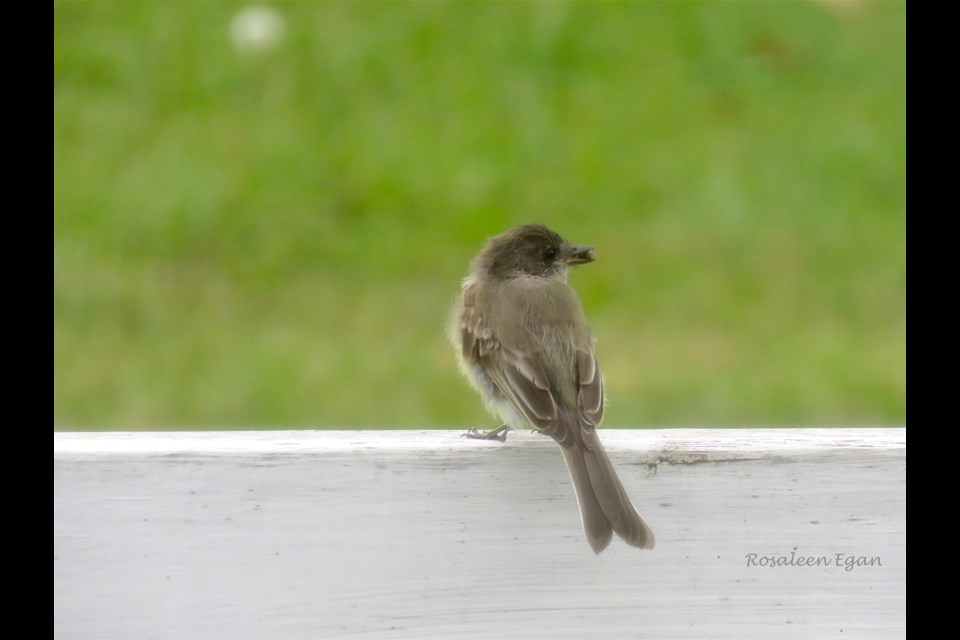When the flies here on the farm were at an all time high several years ago, I was frustrated by the many that made it into the house. One day, I saw an Eastern Phoebe sitting on the nearby fence. Known as a flycatcher, I thought of inviting it in to have dinner.
This is in contrast to the bat I had flying around my living room one evening last week. It was totally uninvited and I had to call in neighbourly reinforcements to usher it out. This is perhaps another story.
It seemed somewhat coincidental nevertheless that after the bat encounter, an Eastern Phoebe started to hang around - outside. This time, I was not tempted to invite it in. I had enough of winged animals in the house.
Besides flies, Eastern Phoebes eat wasps, beetles, dragonflies, butterflies and moths, midges, and cicadas; they also eat spiders, ticks, and millipedes, as well as occasional small fruits or seeds according to allaboutbirds.org.
They sit on low perches often with their tails moving up and down waiting for a insect snack to come by. This tail pumping may be to ward off predators. Eastern Phoebes can catch insects on the fly, and land to pick them up off the ground. The ones I have seen here, fly back to basically the same spot they left and do the “observe and catch” routine over again.
They tend to be solitary, and even mates don’t hang out together much during or after mating. As a matter of fact, the male may be mated to two different females at the same time. Just the same, males are great defenders of their own territory from other Eastern Phoebes and help feed nestlings.
Females are independent and may chase the male away. Females are also particularly strong defenders against predators such as snakes, jays, crows, chipmunks, mice, and House Wrens. Despite the distancing for most of the breeding season, mates can have two broods together in a single season and reuse a nest from one year to another.
The reuse of a nesting site was first documented by John James Audubon in 1804. The Eastern Phoebe was the first bird ever to be banded. “He tied a small circle of silver thread to the legs of nestling phoebes and then documented their return in successive years,” according to allaboutbirds.org.
Together and as a species they are doing well at maintaining and slightly increasing their population with some regional differences. “Its tendency to nest on human dwellings and under bridges has endeared it to many and earned it the common names of “bridge pewee” and “barn pewee” in 19th century North America”, says birdsoftheworld.org. The site goes on to say the building of bridges may be a reason the phoebe has extended it’s range into the Great Plains and Southeastern United States.
It goes on to say that unlike Barn Swallows, “It has not totally abandoned its original nest sites and continues to nest on rock outcrops and other natural niches when available.”
Eastern Phoebes arrive in this area in early March after spending in the southeastern United States. Some winter as far north as the lower Midwest and as far south as Mexico.
Curious to know if my other flycatcher migrates, I discovered from batwatch.ca that there are eight species of bats in Ontario and Quebec. Their diet consists only of insects. Three species migrate, and the rest hibernate.
While I recognize the importance of biodiversity and the contribution of bats to environmental health, I really prefer they stay outside of my home. It’s best Eastern Phoebes stay outside too.
I share experiences of bird visitors to this property with readers every couple of weeks. Until next time, keep your eye to the sky, and look for birds that may come by.
Rosaleen Egan is a freelance journalist, a storyteller, and a playwright. She blogs on her website rosiewrites.com



